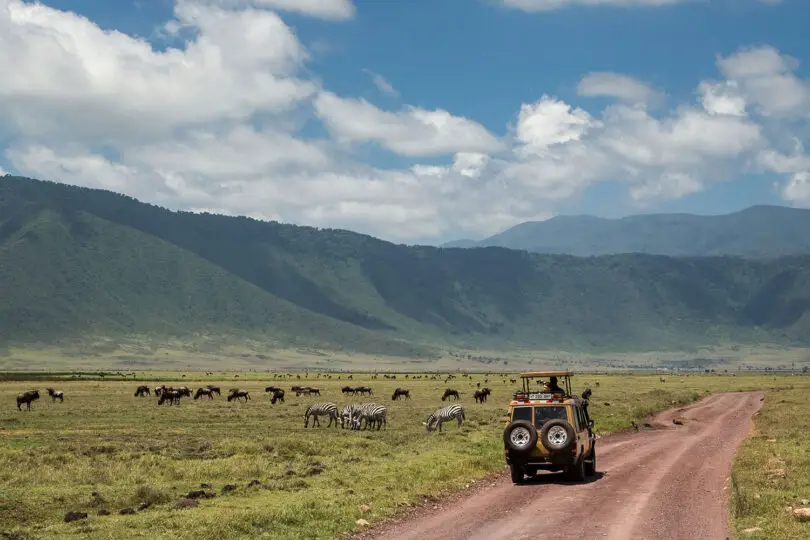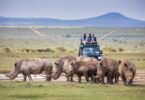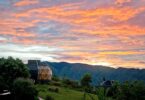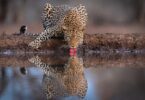Tanzania’s Ngorongoro Crater, a UNESCO World Heritage Site is located in Ngorongoro District, west of Arusha City, and is the world’s largest inactive, intact, and unfilled volcanic caldera. The crater formed following volcanic eruptions some three million years ago. This marvel is 610 metres deep and its floor covers 260 square kilometres (100 square miles). The crater floor is 5,900 feet above sea level and filled with all manner of wildlife earning it a place on the list of the Seven Natural Wonders of Africa.
While some volcanoes around the same area are still active, eruptions are very rare and the Ngorongoro crater volcano is extinct. Several streams drain into and out of the crater forming the seasonal salt lake in the centre of the crater known as Lake Magadi. There are also springs and geysers at the Ngorongoro Crater making it a world-demanding attraction to visit.
Is Lake Magadi in Ngorongoro?
Now Lake Magadi is no ordinary lake, since it is highly salty the lake is very dense and you can almost walk on its surface. The high salinity levels also give it its renowned pink shade but the pink is not only from the salts but from the thousands of pink flamingoes that flock to the lake.
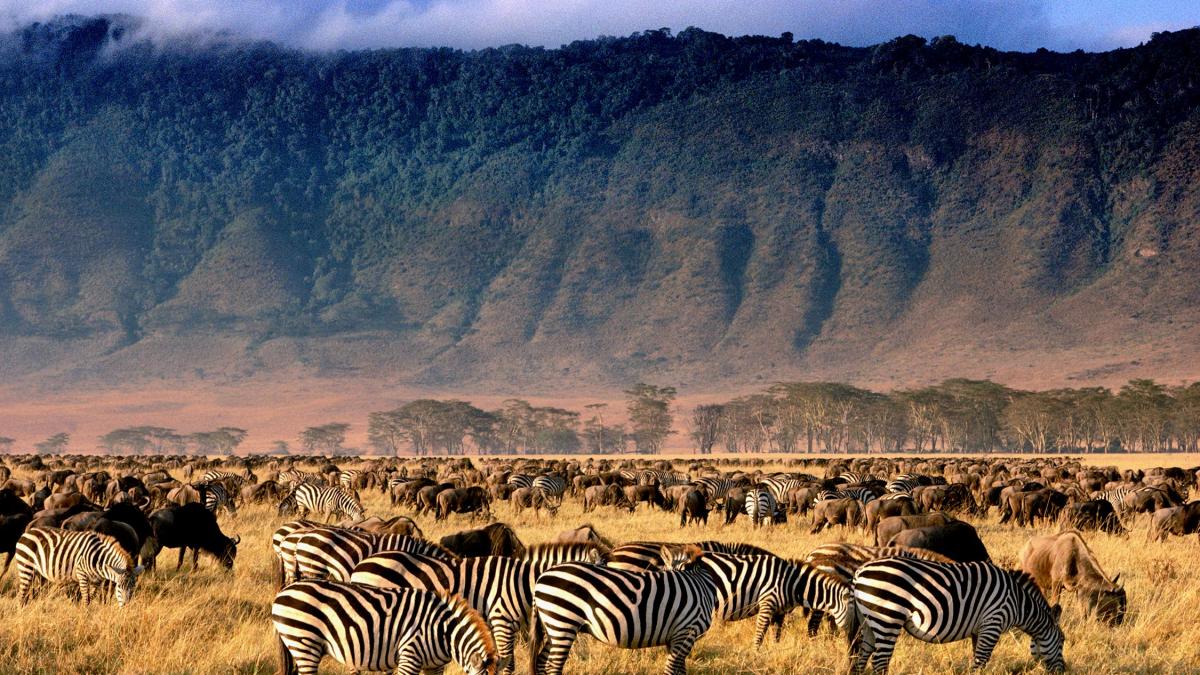
Ngorongoro Crater. Photo/The Times
The Lake is fringed by hundreds of long-legged pink flamingos that are distinguished by their long necks and dark red bills. The flamingoes come to the lake for its rich source of blue-green spirulina algae. You will also find another kind of flamingo here, the black-tipped pink bills, with their bent beaks to facilitate sifting shellfish from the lake mud.
Another phenomenon of the lake is that it shrinks noticeably in the dry season, and becomes a thick crystalline salt pan. Animals wait for this season for they get their salt fix here. Jackals, hyenas and other animals lick the salt to supplement their diet. Here, tourists enjoy their fill of wildlife from the big five to a long list of herbivores and even hippos in the crater swamps. Ngorongoro Crater houses the only pride of lions known to climb trees making it a must-visit tourist attraction. You have seen the photos of cheetahs and lions on top of tourist cruisers, those are most commonly taken in the crater.
Can You Visit Ngorongoro Crater?
A Day Trip from Arusha town is a most sought-after excursion in the Ngorongoro Crater. It lets you get the most out of the area as you stride the land where the earliest man walked. The day trip includes an option for a picnic which is a very romantic scenery with the Serengeti plains sprawled in front of you. This trip involves the drive from Arusha town and the guide will take you all around to see the wildlife, zebras, lions, and wildebeest among others. Air-conditioned vehicle
The day trip is about seven hours of pure adventure and worth every penny for the memories created will certainly last a lifetime. Right after your breakfast in Arusha the driver guide will pick you up and you will get to enjoy the sunrise in the African Savannah; the most beautiful experience you can ever hope to have. The drive takes you to the Ngorongoro Crater where you will most certainly see almost every species of wildlife that is indigenous to East Africa; this includes but is not limited to the rare black rhino, lions, cheetahs, and all the big five.
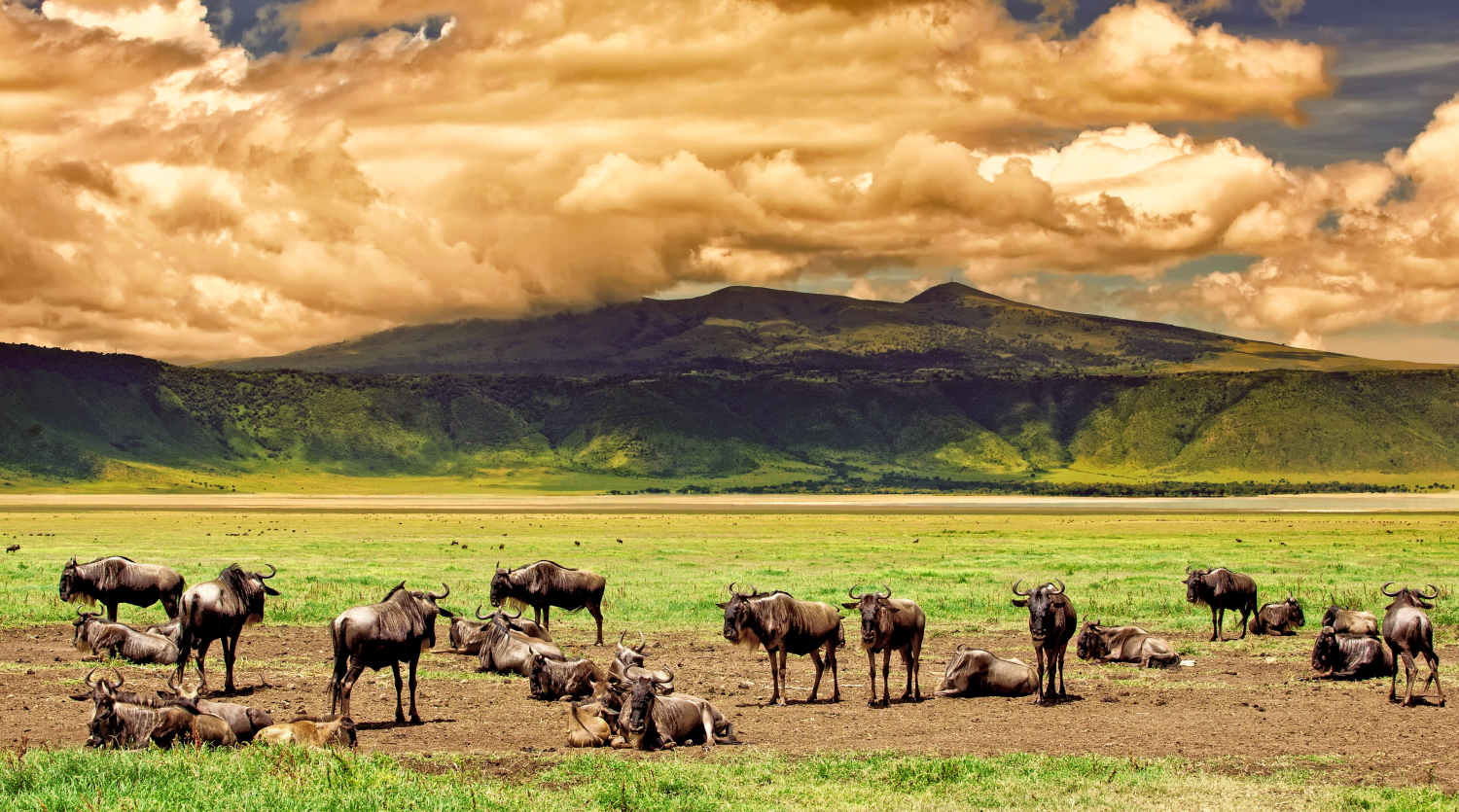
Ngorongoro Crater. Photo/Natural Habitat Adventures
You should rest assured about the wildlife that you will see for Ngorongoro Crater has the greatest concentration of wildlife on the planet.
Do People Live in the Crater?
Previously, the indigenous Maasai were allowed to graze cattle within the crater, but as of 2015, they were banned from the practice. It is feared that high demands for natural resources and modernity from an increasing resident human population, as well as the need to promote and manage tourism, are the most pressing current concerns.
New settlements are mushrooming and even though small-scale agriculture is banned, communities are continuously breaking the law and farming there. It is to awe, for here man and wildlife live together, and historians say, it has been so for time immemorial. Nonetheless, the Ngorongoro Wildlife Conservation Act was passed in 2009 placing new restrictions on human settlement and subsistence farming in the Crater. This highly controversial Act resulted in the displacement of thousands of Maasai pastoralists.


